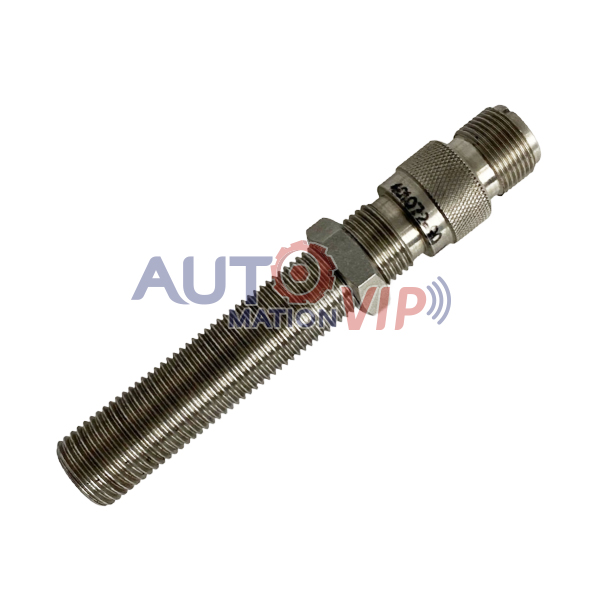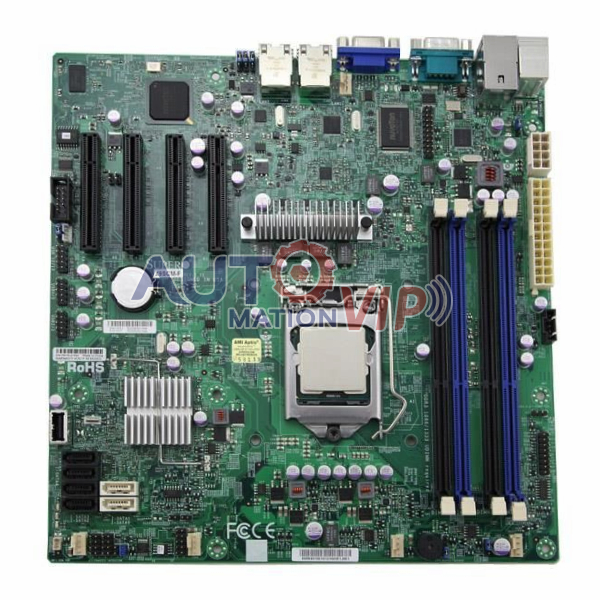
WOODWARD MSC 401072-90 Magnetic Sensors Corporation VR Speed Sensor

WOODWARD MSC 401072-90 Magnetic Sensors Corporation VR Speed Sensor

Basler Industrial Camera, acA640-90um, acA640-120gm, acA640-120gc, acA640-90uc, acA640-90gm, acA640-90gc
In the process of system testing this year, maintaining a consistent test configuration has been of utmost importance. This article focuses on the test configuration centered around the Supermicro X9SCM-F motherboard, exploring its various components, features, and performance in detail.

X9SCM-iiF, X9SCM-F, X9SCM, SuperMicro, Server Motherboard
CPU and Motherboard Combination
The choice of CPU for the Supermicro X9SCM-F motherboard is crucial. While the Xeon E3-1280 was used in this test, it’s worth noting that the X9SCM-F may be better paired with the Xeon E3-1230. The E3-1230 offers four cores and eight threads at a significantly lower cost than the E3-1280.
Motherboard Specifications
1. Board Layout
The Supermicro X9SCM-F is a micro ATX board with a 9.6″ by 9.6″ square footprint. This relatively small size has implications for component placement and overall system design.
2. Expansion Slots
Compared to the Supermicro X8SIL-F, the X9SCM-F has four physical PCIe x8 slots. Two of these are PCIe 2.0 x8, and the other two are PCIe 2.0 x4. This configuration results in the loss of legacy PCI support but provides a significant increase in PCIe bandwidth.
3. CPU Socket and DIMM Slots
The socket H2 CPU area on the X9SCM-F has good clearance, allowing for either the stock Intel heatsink – fan or a 1U/2U passive cooler. Adjacent to the CPU socket are four DIMM slots that only accept unbuffered RAM (ECC or non-ECC), in contrast to the X8SIL – F which can handle both unbuffered and registered DIMMs.
4. SATA Ports
Utilizing the Intel C204 chipset, the motherboard has two sets of SATA ports. There are two SATA III 6.0gbps ports and four SATA II 3.0gbps ports that are perpendicular to the PCB’s plane. It’s important to note that in Intel Matrix RAID arrays, drives from the SATA III and SATA II ports cannot be mixed. However, with the popularity of software RAID and the relatively low cost of PCIe SAS/SATA controllers for eight ports, this limitation may not be a significant issue for most users.
5. USB Header
The presence of an internal USB header is a valuable server feature. It enables the installation of a USB drive inside the chassis, which is especially useful for storage operating systems like unRAID that require a USB key for licensing purposes.
6. Rear I/O Panel
The rear I/O panel of the X9SCM-F has a standard set of ports. A PS/2 keyboard and mouse port are located next to the IPMI NIC and two USB ports. A VGA out and serial port follow, along with two Intel gigabit NICs. The NIC situation is interesting, with a standard IPMI NIC using a Realtek RTL8201N controller. For data, there are two Intel gigabit NICs, one being the Intel 82574L which is a common standard NIC for servers, and the other an Intel 82579LM that comes off the C204 chipset. Windows 7 and VMware ESXi have different levels of out – of – the – box compatibility with these NICs, with the 82574L being more readily supported initially.
Features of the Motherboard
1. AES – NI Feature
For users interested in leveraging Intel’s Xeon E3 – 1200 series AES – NI acceleration features, it’s important to note that on this board, AES – NI was disabled by default in the BIOS. Proper BIOS configuration is essential during system setup.
2.IPMI and KVM-over-IP
Supermicro’s IPMI and KVM – over – IP offer great deployment flexibility. Fan speeds, chassis intrusion sensors, thermal sensors, etc. can be remotely monitored, and alerts can be set up to notify administrators of issues. The Winbond WPCM450 BMC chip also enables remote power up, power down, and reset of the server in case of unresponsiveness. The test system has functioned without a keyboard, mouse, CD/DVD ROM, or monitor even during multiple BIOS tweaks and operating system/hypervisor installations.
3. Remote Mounting of Images
Another significant feature is the ability to remotely mount CD and floppy images to the machine over the dedicated management Ethernet controller. This keeps maintenance traffic off the primary Intel NICs and eliminates the need for an optical disk connection to the Supermicro motherboard. Combined with the onboard USB 2.0 header, remotely mounting OS installation or recovery images is straightforward.
4. KVM – over – IP Capabilities
The KVM – over – IP features of the Supermicro board are highly valuable. Users can log on to the server using a web browser with Java platform support or through Supermicro’s IPMIview software to gain remote console capabilities with mouse support. This BMC – level access allows for quick troubleshooting of issues such as hung boot processes, frozen servers, and remote management of motherboard and add – in card BIOS. For server – class motherboards, these IPMI 2.0 features, including KVM – over – IP, are essential, especially for users with redundant PSUs where remotely toggling power supply ports can be challenging.
Overall, the Supermicro X9SCM-F is one of the top choices for a Xeon E3 motherboard currently, especially when full ATX boards are too large for an application. While the combination of the Intel 82574L and 82579LM NICs may have some drawbacks in terms of initial compatibility, the X9SCM-F has many advantages. It provides a significant upgrade from the X8SIL-F with its SATA III ports and additional PCIe slots and bandwidth. The various features such as IPMI and KVM – over – IP make it a highly functional and reliable option for server – based systems.
As we known that an automation system rules the industries today. More and more industries are moving towards this automation process. Even industries that stick to the old production methods tend to use industrial automation systems for their manufacturing processes. Different industrial automation spares parts are used by industries today for their production. Particularly, manufacturing industries have a wide range of such automation products and systems to carry out their production processes. If you want to increase your industry production level, then going with these automation systems is a brilliant decision for you.
Looking for industrial automation products for your company? AutomationVIP is the best one of supplier of you.
Buying industrial contactors online can save time and money, as customers can browse through a wide selection of contactors to find one that meets their needs. Additionally, many online stores like Aeliya Marine Tech offer free shipping on orders over a certain amount, so customers can even save more money.